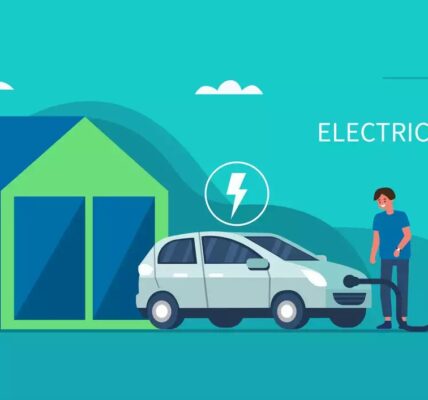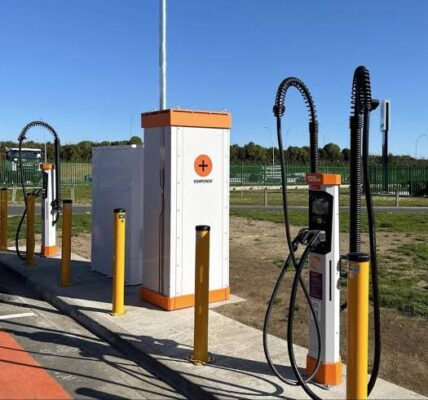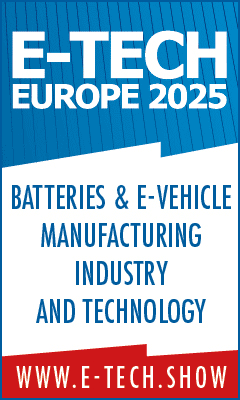Kurt Kelty, the vice president of propulsion and sustainability at General Motors, told us his goal is to see electric and gas-powered vehicles achieve price parity. To create a market where the Chevy Silverado EV is as affordable as a V-8-powered Silverado 1500 means erasing the $20K discrepancy between their current starting prices. Doing that will take time. It will also require new chemistry.
But if anyone can do it, it’s probably Kelty, who started his career in batteries over 30 years ago at Panasonic and eventually helped create the world’s first Gigafactory during his 11 years at Tesla. Today, as part of an extended partnership with LG Energy Solution, GM announced it will produce a new battery cell that promises to lower the cost of production with a new lithium-manganese-rich (LMR) prismatic battery cell. It’s a step to lower the price of electric vehicles. Let us explain.
Manganese, Manganese, Manganese
We’ll use the Silverado EV as an example, as GM said these new LMR prismatic cells will first appear in electric pickups and full-size SUVs in 2028. The 2025 Silverado EV has a 205-kWh battery pack with 24 modules, each of which carries 24 pouch cells that contain a careful blend of lithium, nickel, manganese, cobalt, and aluminum (NMCA). Cobalt is the most expensive ingredient, with the cost of nickel not far behind, as it makes up the majority of the battery recipe. According to GM, the new LMR prismatic cells replace a substantial amount of pricey nickel with the more affordable manganese.
Each LMR prismatic cell looks similar to an old Phillips DVD player. They weigh approximately six to 11 pounds and are significantly larger than the outgoing pouch cells. GM told us that these larger prismatic cells have 33 percent higher energy density than comparable lithium-iron-phosphate (LFP) prismatic cells, which are currently used in the Tesla Model 3. The new format would also dramatically reduce the number of modules needed in a Silverado EV’s battery pack from 24 to six.
The reduction in nickel content comes at an interesting time, as companies such as Porsche have attributed the higher level of nickel in their nickel-manganese-cobalt (NMC) battery packs for 2025 Taycans to boost energy capacity, increase charging speed, and lower weight. Also, tariffs. Though GM assured us that the announcement of bolstering domestic battery production wasn’t a reaction to President Trump’s tariffs, as LMR R&D goes as far back as the same year former President Biden was elected. More recently, GM signed an agreement with Element 25 in 2023 to build a manganese sulfate facility in Louisiana to process manganese mined and transported from Australia, for which GM invested $85 million as a means to optimize its production chain of EVs.
For now, GM’s plan to incorporate these new LMR cells into future vehicles is part of a larger strategy to offer specific battery types for specific use cases. For example, using more affordable LFP cells in entry-level EVs that won’t be burdened with the need for maximum range for towing, perhaps for the upcoming second-generation Chevy Bolt EV. NMCA cells are at the other end of that spectrum, for use in higher-cost vehicles that also require the most range, such as the Cadillac Escalade IQ. LMR fits between those extremes, as a balance of cost and range. That type of flexibility is likely paramount as GM is responsible for 10 of the 74 electric vehicles sold in the United States today.
Practice Makes Perfect
We toured the Wallace Battery Cell Innovation Center at GM’s Technical Center in Warren, Michigan, where validation of the new cells will occur in 2027. While there, we saw each stage of the production process of these new LMR prismatic cells. There are several rooms for each step, which allows GM to fine-tune the process before mass production. In one bank of rooms, they perfect the mixing of materials for cathode and anode production. Another room pulls a sheet of aluminum some 0.5 nanometer thick, without tearing it from the spool, to create electrodes. In a building behind Wallace, while still under construction, the entire assembly line will be built to maximize efficiencies.
Our favorite part of the field trip was during the tour of the nearby Estes Global Battery Systems Lab, where the hardcore chemistry happens. Stuff I don’t even dare attempt to explain, as I’m not someone qualified to speak about cathode material synthesis, material surface modulation, or electrode characterization. The three rooms with those labels sound like classes I failed in college. Within one of these labs, among the electrolysis thing-ah-muh-whos and electrospinning how-do-ya-dos, sat a bright red toolbox with an Edelbrock sticker slapped on its sides—an unintentional metaphor for GM’s ongoing evolution of propulsion.
GM’s 15-year joint venture with LG Energy Solution has produced over 100 million battery cells in its Ultium Cells plants in Warren, Ohio, and Spring Hill, Tennessee. GM wouldn’t spill the beans about where their new LMR prismatic cells would be produced, but it did promise that future vehicles using these new LMR prismatic cells would be capable of the same uber-quick DC fast-charging speeds and existing 100,000-mile battery warranty offered today.








